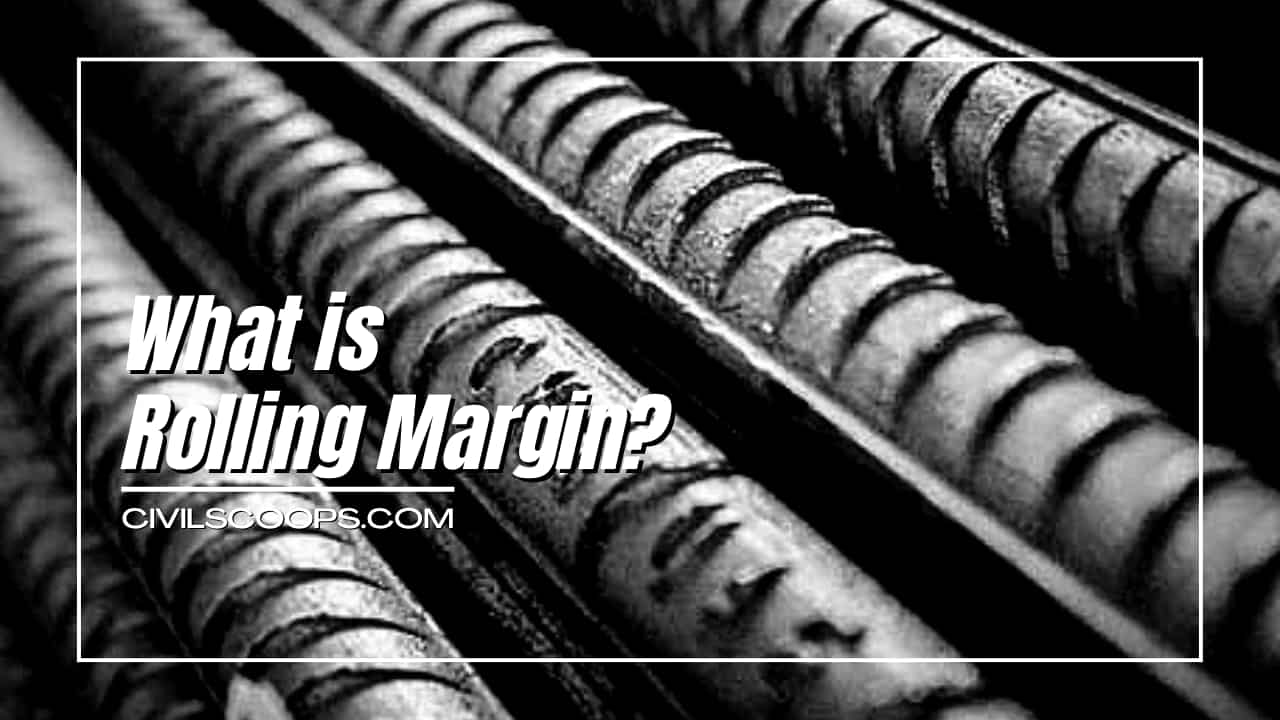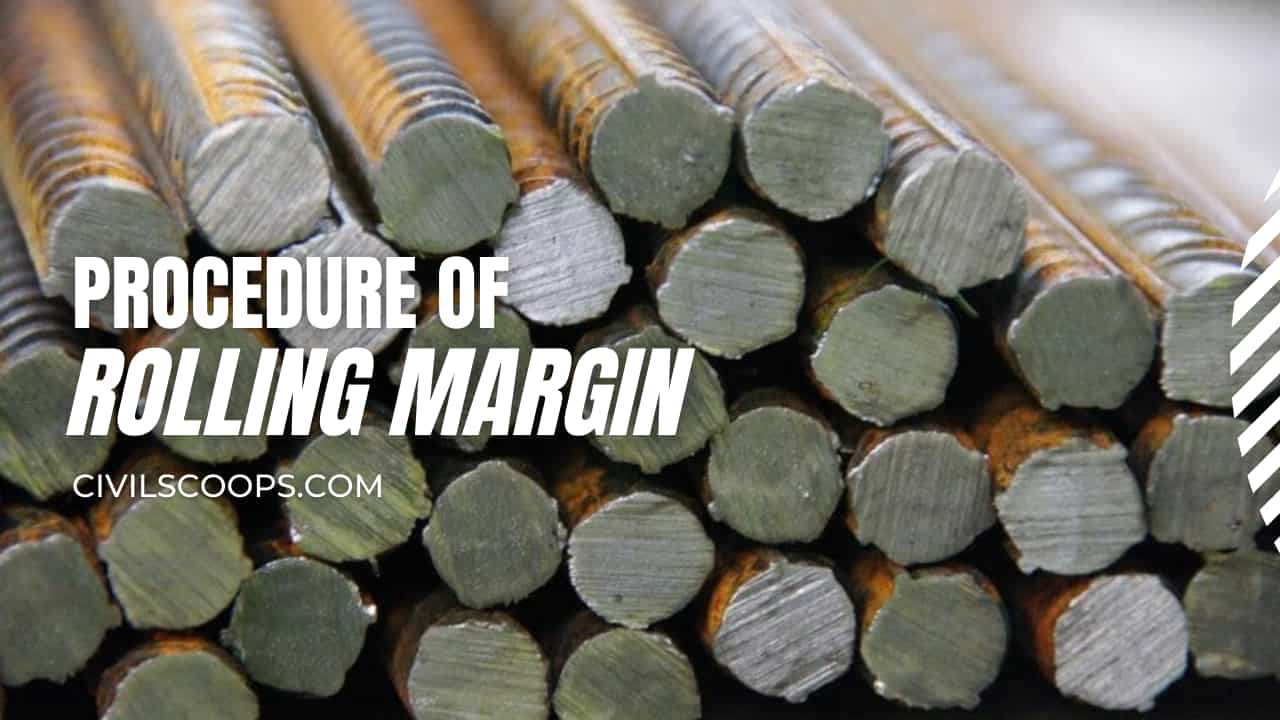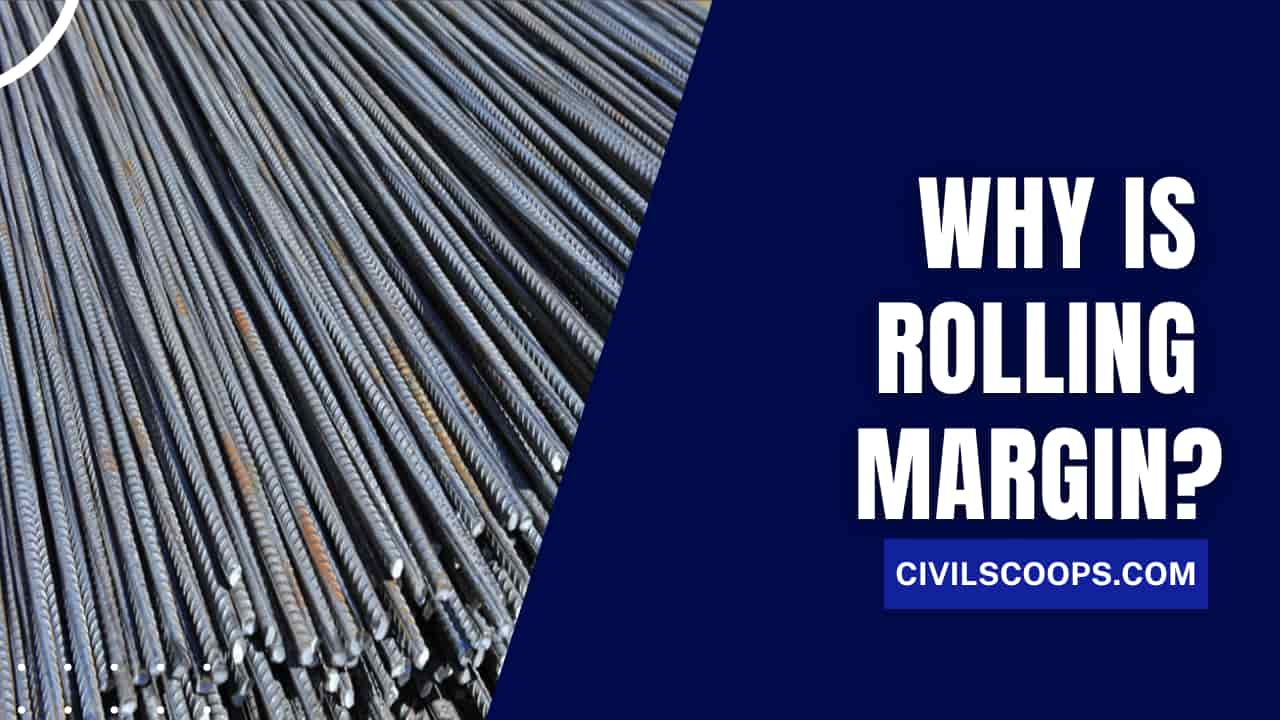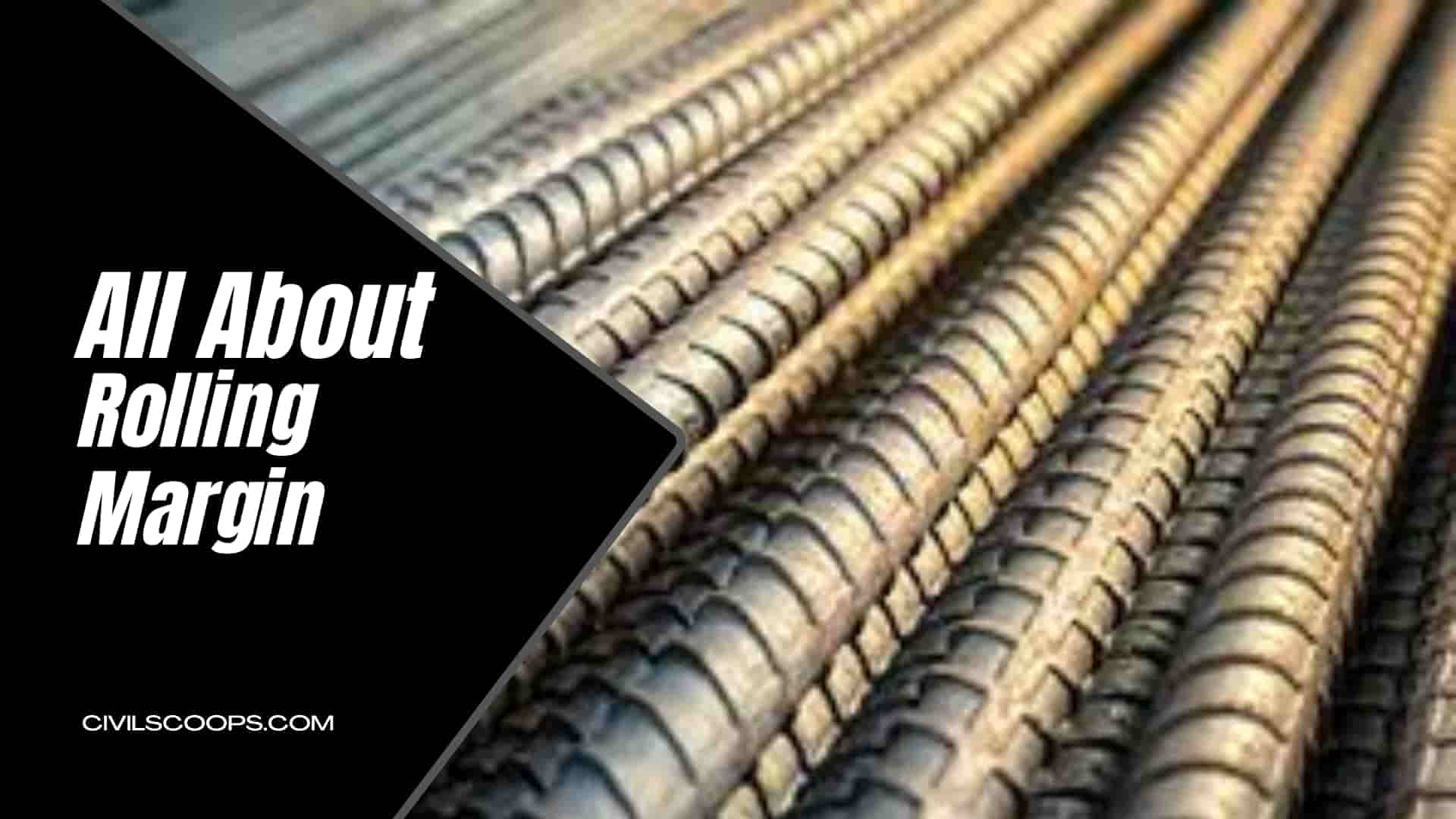What Is Rolling Margin | Procedure of Rolling Margin
Table of Contents
What is Rolling Margin?

The rolling margin is the difference between the actual weight of round bars (Reinforcement) Vs. Theoretical weight of round bars. This theoretical weight of round bars picks in IS Codes.
IS Codes 1786: 2008 ( High Strength Deformed Steel Bars and Wires for Concrete Reinforcement, Fourth Revision), this picks in Table-1 Nominal Cross-Section Area and mass, ( Dia Bars: 4mm, 5mm, 6mm, 8mm, 10mm, 12mm, 16mm, 20mm, 25mm, 28mm, 32mm, 36mm, 40mm).
This is because of the dia, which is used for casting rebars. Over a period of time, the shape of dia changes, and as a result, the diameter of the steel bar also changes, which results in a difference in the unit weight of steel.
The size of the die is kept small, and as a result, the rolling margin is negative in the initial stage of production, thereafter it is more or less close to theoretical weight, and then the size of the die increases, which results in a rolling margin on the positive side.
As per IS code tolerance for reinforcement as below.
As per the above tolerance of reinforcement weight
- Up to and including 10 mins: 4 mm to 10 mm dia of a bar, Individual weight of Up and Down 8%, The Batch weight of Up and Down 7%.
- Over 10 up to and including 16 mins: 12 mm dia bar to 16 mm dia bar reinforcement, individual weight of Up and Down 6%, The Batch weight of Up and Down 5%.
- Over 16 mins: 20 mm dia bar to 40mm dia bar reinforcement, individual weight of Up and Down 4%, The Batch weight of Up and Down 3%.
Procedure of Rolling Margin

Rolling Margin of Steel Format: Download Format
The above format is used in a rolling margin for reinforcement.
- In this method, one dia of bar minimum three sample requirement, Each sample length minimum 1 m. (1000 mm)
- All the above three samples take the induvial weight, Heter correct length because of cutting of reinforcement not perfect length (Example: 990 mm, 995 mm, 996 mm)
- So Convert in 1000mm length in weight Like 10 mm dia bar 990 length steel weight 0.598 kg, After converting 1000mm length steel weight 0.604 kg, all three weight fill in a block No. 8
- And block No. 9 actual weight of IS 1786, page- 5, table-1 consider
- Block No 10 is a difference between block no. 8 and block no. 9
- Here, Block no 11 is a negative all their average sample difference. Same as block no 12 positive blocks, all three different.
Why is Rolling Margin?

The rolling margin differs between “-“and “+” depending on the tolerance as per IS code 1786: 2008. Here rolling margin show round bar is uber the weight or over the weight.
[su_box title=”FAQ” style=”default” box_color=”#333333″ title_color=”#FFFFFF” radius=”3″ class=”” id=””]
Rolling Margin
Rolling margin is the difference between the theoretical and actual weight of steel. This is because of the die which is used for casting of rebars. Over a period of time the shape of die changes, and as a result the diameter of the steel bar also changes which results in difference in unit weight of steel.
Rolling Margin Calculation Formula
Total Weight of Bars (Dia wise) / Total Running Metre of Bars = Actual Sectional Weight of bars. Compare sectional weight with Standard IS Weight. Weight as per IS Standard = Dia x Dia / 162. Rolling margin is the difference between the theoretical and actual weight of steel.
What Is the Rolling Margin as Per IS 1786?
IS-1786 (2008 ) has set a standard to calculate the rolling margin of steel in percentage, to maintain the safety of buildings, to complete the construction work in a given time, & to limit the loss in the calculated project cost.
Rolling Margin of Steel Percentage
12mm to 16mm +/- 5%. 20mm and above +/-3%. Total Weight of Bars (Dia wise ) / Total Running Metre of Bars = Actual Sectional Weight of bars.
Steel Rolling Margin Test
Rolling margin is the difference between the theoretical and actual weight of steel. This is because of the die which is used for casting of rebars. Over a period of time the shape of die changes and as a result the diameter of the steel bar also changes which results in difference in unit weight of steel.
Rolling Margin as Per IS Code
Rolling margin is percentage of deviation in Sectional weight of Reinforcement steel allowable as per IS codes. Reinforcement steel is extruded from a mould which is made for a particular size e.g. 8mm Dia.
Rolling Margin Tolerance
The allowable margin in the percentage deviation of the actual unit weight of a steel bar from its standard or theoretical unit weight is called the rolling margin of steel.
Rolling Margin in Reconciliation
In rolling margin we roll down the actual received quantity of steel to match its length so that steel reconciliation becomes easier and billing process happens in correct way. Quantity of steel after rolling margin is used for reconciliation and billing of contractor.
How to Calculate Rolling Margin of Steel?
- Rolling margin of steel is calculated by taking samples of different diameter of bars and comparing them with the theoretical or standard weight of the bar.
- When steel has arrived at the site, the sample of length (W1) is taken, the length of the sample is kept as 1m (meter).
[/su_box]
[su_note note_color=”#F2F2F2 ” text_color=”#333333″ radius=”3″ class=”” id=””]
Like this post? Share it with your friends!
Suggested Read –
- Important Factors to Consider When Building a New Home
- All About Plywood | What Is Plywood | What Is Plywood Used For | What is Plywood Made From
- All About Soil Compaction | What Is Soil Compaction | Different Types of Soil Compaction Equipment
- All About Consider | When Building a New Home | Important Factors to Consider When Building a New Home
- All About Painting | What Is Painting | Painting Area Calculation for Evan Surface & Uneven Surface |How Much Paint Do I Need
[/su_note]
Originally posted 2022-07-13 19:39:57.

